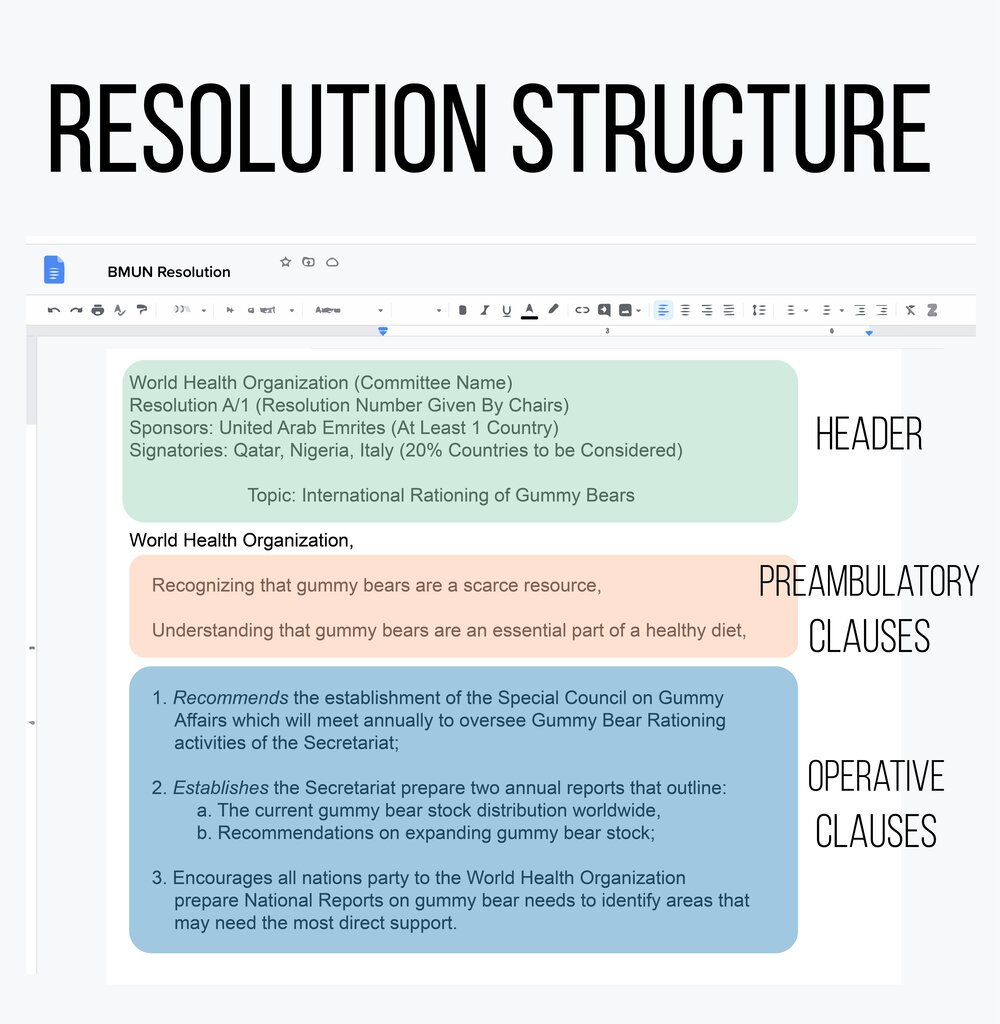Resolution Structure
Having a properly structured resolution is the first step to having your resolution taken seriously by your dais and your fellow committee members. Resolutions are structured to help you demonstrate your knowledge on a topic and organize your proposals to address it.
Annotated Sample
Elements
Res number: Your chair writes this on each paper in submission order; this will determine the speaking order in formal caucus.
Topic: The topic of the resolution
Committee: The committee in which the topic is being discussed
Sponsors: Members of the committee who directly contributed to the resolution
Signatories: Members of the committee who want to discuss the resolution; not necessarily in support of the resolution
Preambulatory clauses ("Preambs"): Clauses introducing the problem at hand, providing some background information, and in general indicating the attitude of the resolution. Typically, these begin with gerunds (“-ing words”). When writing a resolution, the first word of these phrases should be underlined if hand-written and italicized if typed. The phrase should end with a comma.
Resolution
Resolution A/1
Topic: Proliferation of Nuclear Weapons
Committee: First Disarmament & International Security
Sponsors: United States, Austria, the United Kingdom, and Italy
Signatories: Greece, Tajikistan, Japan, Canada, Mali, the Netherlands, Mexico and Gabon
Reminding all nations of the celebration of the 50th anniversary of the Universal Declaration of Human Rights, which recognizes the inherent dignity, equality and inalienable rights of all global citizens,
Reaffirming its Resolution 33/1996 of 25 July 1996, which encourages Governments to work with UN bodies aimed at improving the coordination and effectiveness of humanitarian assistance,
Noting with satisfaction the past efforts of various relevant UN bodies and nongovernmental organizations,
Operative Clauses ("Operatives"): The meat of the resolution. They outline the ideas and proposed actions of the resolution. All operatives should be numbered in order and the first word should be underlined if the resolution is either hand-written or typed. Each operative should end with a semicolon, except for the last one, which should end with a period.
Stressing the fact that the United Nations faces significant financial obstacles and is in need of reform, particularly in the humanitarian realm,
- Encourages all relevant agencies of the United Nations to collaborate more closely with countries at the grassroots level to enhance the carrying out of relief efforts;
- Urges member states to comply with the goals of the UN Department of Humanitarian Affairs to streamline efforts of humanitarian aid;
- Requests that all nations develop rapid deployment forces to better enhance the coordination of relief efforts of humanitarian assistance in complex emergencies;
- Calls for the development of a United Nations Trust Fund that encourages voluntary donations from the private transnational sector to aid in funding the implementation of rapid deployment forces;
- Stresses the continuing need for impartial and objective information on the political, economic and social situations and events of all countries;
- Calls upon states to respond quickly and generously to consolidated appeals for humanitarian assistance; and
- Requests the expansion of preventive actions and assurance of post-conflict stance through reconstruction and development.

